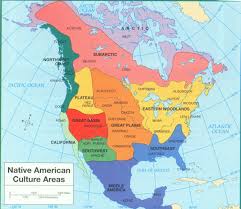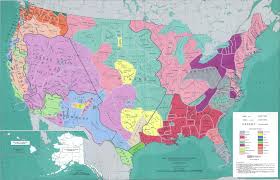The sovereignty of Indian nations in the U.S. is inherent. European nations, then the United States, re-affirmed Tribal sovereignty while engaging in treaty-making with Tribes on a nation-to-nation basis.
Even though the treaty-making era formally ended in 1871, the sovereign status of Indian nations still remains today. As sovereign entities, Indian nations are guaranteed the power and/or right to determine their form of government, define citizenship, make and enforce laws through their own police force and courts, collect taxes, regulate the domestic affairs of their citizens, and regulate property use.
Federal policies, such as the Indian Reorganization Act of 1934 and the Indian Self-Determination and Educational Assistance Act of 1975, have bolstered Indian nations’ rights to govern themselves and manage their own lands and resources.
Federal, state, county and local governments still challenge American Indian sovereignty, especially when there are questions of jurisdictional authority. Many Indian reservations contain land with multiple types of ownership (trust, fee, restricted, tribal, individual Indian, non-Indian) creating a checkerboard ownership pattern. As a result, reservation lands are also under several different jurisdictions (tribal, city, county, state, federal) making it difficult for Indian nations to assert regulatory and legal control and to foster new development on their lands. Many local disagreements over land use and law enforcement between tribal nations and neighboring cities, counties and private landowners have severely compromised Tribal regulatory efforts and have crippled economic development.
During the 1950’s and 1960’s, Congress “terminated” or withdrew federal recognition of 109 tribes, primarily in Oregon and California. In all, 13,263 individuals lost federal recognition as Tribal members and 1,365,801 acres of land were removed from trust status. After the termination policy was officially ended in 1970 by President Nixon, many Tribes fought long and hard legal battles to have their federal recognition regained and to have their lands returned to Tribal ownership. Tribes such as the Menominee Indian Tribe and the Klamath Tribes have managed to re-claim federal recognition but many, including the Klamath, have yet to recover their lands.
While some would argue that termination is no longer a threat, its long term effects are still felt today in millions of acres of alienated Tribal lands and in ongoing jurisdictional and legal conflicts over sovereignty and land rights. The recent U.S. Supreme Court decision, Carcieri v. Salazar(2009) involves the Narragansett Tribe and hinges upon the issue of whether or not the Tribe was federally recognized at the time of the Indian Reorganization Act of 1934. As long as an Indian nation’s legal and sovereign rights are determined by federal recognition, which can be granted and taken away at the whim of Congress, the threat of termination is real and its consequences can be devastating to Tribes.

